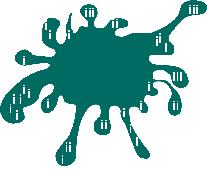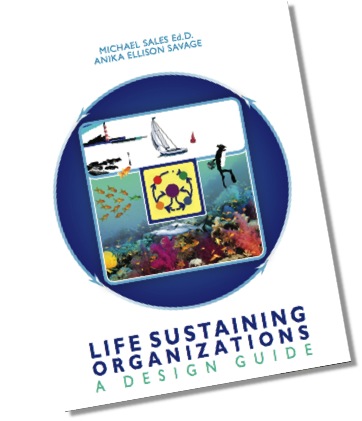Anticipatory Leadership
Futurist
A relentless fascination with the future. Anticipatory leaders are incessantly curious about the future. They constantly discern how emerging social trends, technical and scientific innovations, political forces, legislation, environmental impacts and economic conditions might affect organizational possibilities and their insights are manifested in agile organizational strategies that create competitive advantage. They are visionaries.
Strategist
An ability to think systemically, both in terms of how forces outside one's organization are integrated in causal patterns to generate opportunities and threats and the interaction between these external dynamics and the internal functioning of one's own organization. Anticipatory leaders understand the complex system of forces that drive current events. They are like seismologists: comprehending the deep structure of their own organization and the external economic, political and competitive systems in which their companies exist. They know the fundamental dynamics shaping the events and trends of their organization's life. They are system thinkers.
Integrator
An interpersonal skillfulness, enthusiasm, concern, empathy, up-beat energy that mobilizes and motivates others to do something great. Anticipatory leaders orchestrate the organizational learning process. They design human systems that learn to use these forces to their advantage. They disseminate and deploy relevant external information throughout the entirety of their organizations. They possess the interpersonal competence to motivate, mobilize, and communicate. They are educators.






Anticipatory Leaders sense of the future is so strong it is as if the future is alive in the present. This perspective allows them to open doors to new ways of seeing, hearing, thinking and feeling in a way that makes everyone else say, “Yeah. That’s really cool. Why didn’t I do that!?”
Anticipatory Leaders in any field share this ability with artists like Miles Davis or Georgia O’Keefe. Steve Jobs of Apple, Frances Hesselbein of the Drucker Foundation, Stan & Iris Ovshinsky of Energy Conversion Devices, Al Gore of CurrentTV, and Richard Branson of Virgin Airlines are all examples of anticipatory leaders. Knowing how to learn about the future, anticipatory leaders possess a deep advantage in an otherwise turbulent and confusing world.

Art of the Future works with organizations to develop anticipatory leadership through...
Forward Focused Thinking
Leaders who are naturally curious about a broad range of developments that might affect their organizations in one, five, ten, fifteen, or even more than 100 years from the present are Forward Focused Thinkers. This orientation is relatively unique at the individual level, and it is even less common for whole organizations. Organizational leaders frequently “outsource” forward focused thinking to an internal strategic planning function or to consultants. Art of the Future convenes structured conversations among executives, managers and line workers to demonstrate that everyone is already thinking about the future, usually with a lot of creativity. These conversations inject the practice of seeing past the present into an organization's blood stream and make Forward Focused Thinking part of the organizational DNA. Paying attention to the Forward Focused Thinking that is always going on in an organization sets the stage for the organizational agility that is so needed as a response to inevitable change.
Structural Dynamics
Art of the Future's Structural Dynamics process shows client organizations how to develop a comprehensive picture of future possibilities. Structural Dynamics is a disciplined approach to modeling the complexity around any mission critical topic. Unlike some scenario planning efforts which concentrate on the crafting of intriguing stories, Structural Dynamics explore the embedded connections and relationships between the elements of a system that cause today's events. Structural Dynamics displays the forces affecting any domain of interest in a coordinated network of interacting elements. Anticipatory Leaders who become skilled at Structural Dynamics know how to integrate the rigor of left brained systems analysis with the creativity of right brained storytelling to galvanize action at all levels of organizational life.
Robust Human Systems
To take advantage of opportunities and defend against threats, Anticipatory Organizations need to be robust human systems. They have to forsee ways to move ahead, and they have to bounce back vigorously from temporary setbacks. As discussed in an article we’ve published on this topic, "Understanding the Power of Position: A Diagnostic Model," robust systems can be designed by Anticipatory Leaders.
Left on automatic pilot, organizations will be robust only as long as the environment in which they exist fits very neatly with their existing talents. Clay Christensen’s The Innovators Dilemma is a virtual catalog of organizations that did very well as long as the structural dynamics of their context remained within certain tolerances. But, when some fundamental element of the system changed (for example, when the disposable income of a demographic group grew while that of another shrank), the organization didn’t anticpate the change and couldn’t master it quickly enough to survive and thrive.
Robust human systems maximize and combine the power of four elements…

Differentiation
The organization has many different people and units acting as sensors to interpret and affect the environment. The more complex an organizations context, the greater the differentiation required. Like the coast of Norway, a differentiated organization is full of nooks and crannies.

Homogenization
Like a symphony orchestra with a vast repertoire, even though the organization may do many, many different things, all of its members know how to do several of the same things very well. The oboist and the drummer both know how to keep time. The violinist and the French horn player both practice the same scales. The basics are so well replicated by everyone, that no one even notices. Like a plain circle, homogenization has an undifferentiated, featureless surface

Integration
Robust human systems are unified around a common purpose. The acts of many people are coordinated by a passionate intention to achieve an well-understood mission. They may be operating independently in their own unique style but they are moving the organization in the same direction.

Individuation
Commonality of purpose doesn’t suppress individuality in a robust system. Great organizations embrace the uniqueness of great men and women. There is plenty of room for the individualized "i"!
It is second nature for Robust Human Systems to anticipate the future. They are comprised of energetic, curious, and communicating learners. They buzz. They glow. Anticipatory Leaders are the bellows blowing oxygen into these systems. They design Life Sustaining Environments. They make it easy to have difficult conversations.
Anticipatory leaders use the power of integration to bring people together for conversations that don’t happen in most organizations. Improving the quality of workplace dynamics is an example of this kind of challenge: it’s an issue everywhere but the people from different functions are not called to focus on the subject. Anticipatory leaders know how to convene conversations around important issues.
Because we understand the elements of a robust system, Art of the Future helps Anticipatory Leaders maintain them through our executive coaching services, our training programs, our event design activities and our facilitation services.


